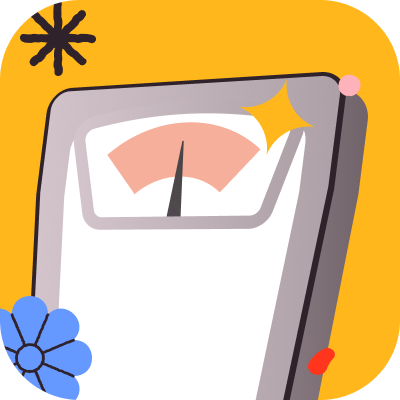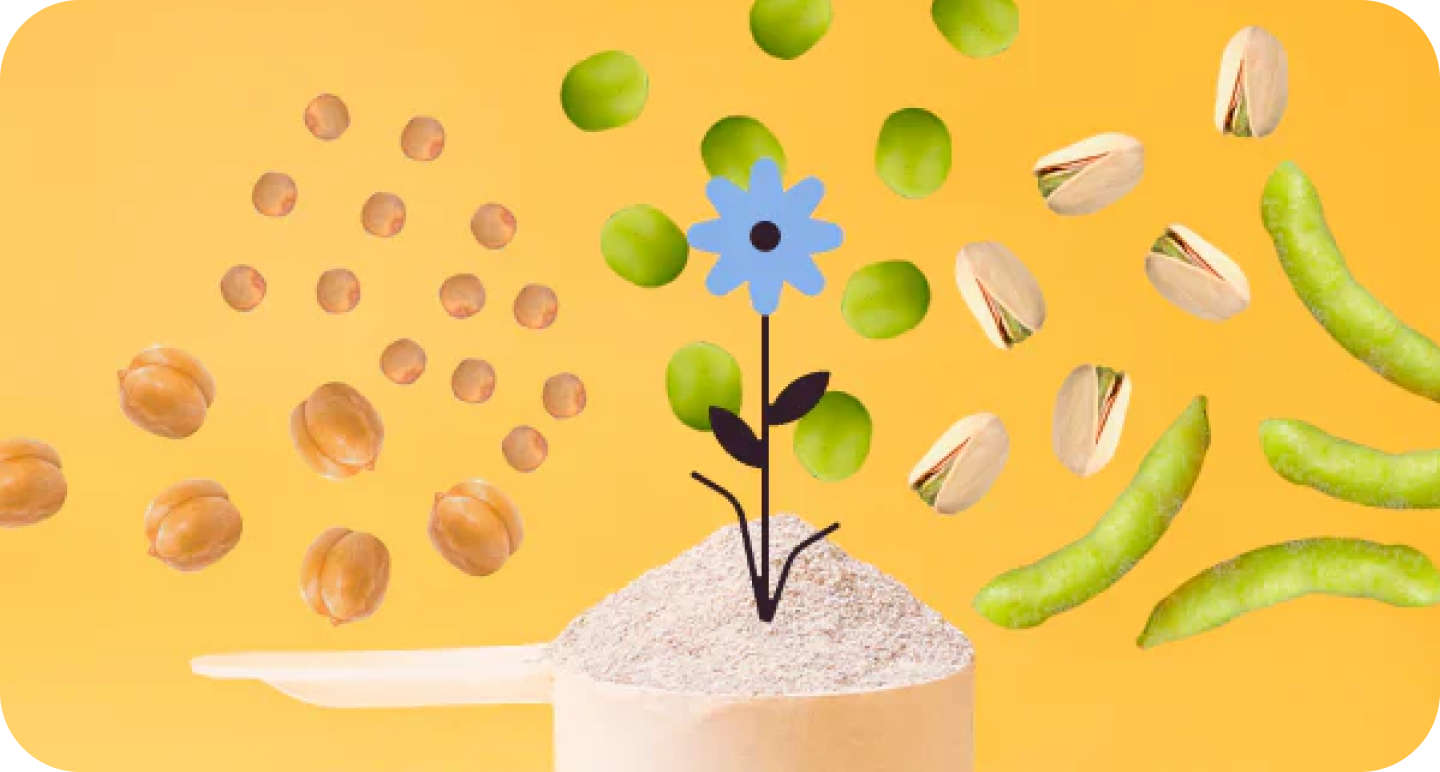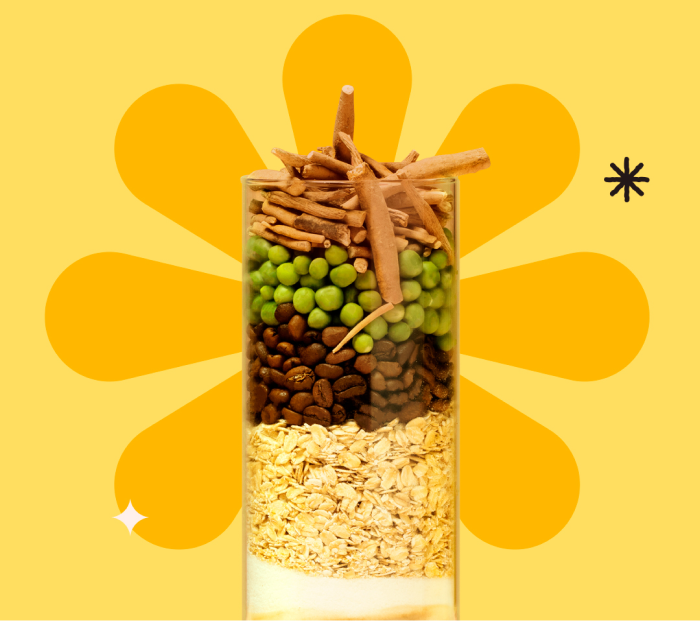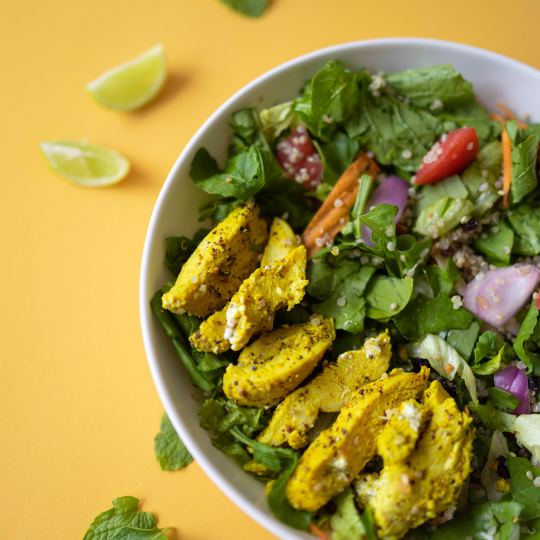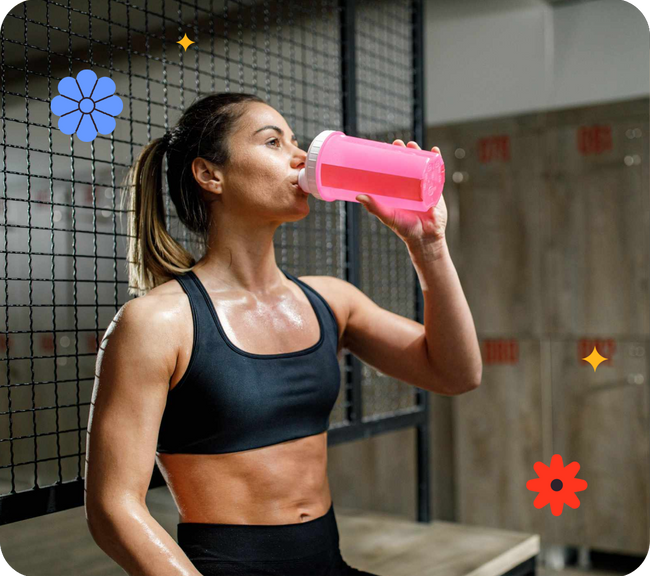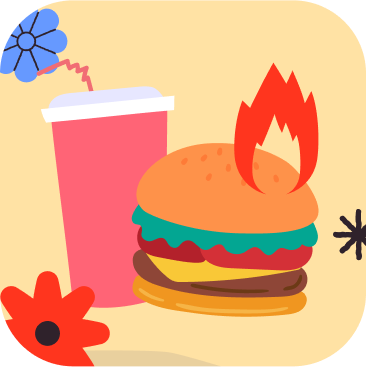Picture this: you wake up feeling groggy, stumbling through your morning routine, barely managing to grab breakfast before dashing out the door. Sound familiar? Imagine starting your day with easy, nutritious breakfast recipes filled with energy-boosting nutrients and vibrant flavors. Suddenly, you feel more alert, focused, and ready to tackle whatever challenges lie ahead.
Aware of the fact that breakfast is considered the most important meal of the day. Yet, in the hustle and bustle of modern life, for most people, breakfast often takes a back seat to the morning rush.
If you are someone who skips breakfast but aims for weight loss, you can find it challenging to achieve your health goal. Instead Incorporating a breakfast that’s high in protein can help you shed your extra kilos quickly. This is because protein helps to increase feelings of fullness and satiety, and has a higher thermic effect.
Through this article, let’s explore seven high-protein breakfast options that are easy to prepare, delicious, and effective for weight loss.
Scroll down to keep reading...
Key Takeways:
- Breakfast is crucial as it breaks the overnight fasting period, replenishes glucose levels, and provides essential nutrients needed for energy and focus throughout the day.
- A nutritious breakfast can kick-start the metabolism and improve cognitive function, mood, and overall physical performance.
- Experts suggest having a high-protein breakfast for weight loss benefits.
- A protein-rich breakfast helps maintain muscle mass during weight loss, ensuring that the weight loss is primarily from fat.
The Role of Protein in Weight Loss
Protein plays a multifaceted role in facilitating weight loss through various physiological mechanisms:
-
Provides Satiety:
The most satiating macronutrient is protein, which makes you feel full for longer. It stimulates the release of hormones like peptide YY, GLP-1, and cholecystokinin, which signal fullness to the brain and reduce appetite, leading to decreased calorie intake. -
Increased Thermogenesis:
The body expends more energy digesting and metabolizing protein compared to carbohydrates and fats, a phenomenon known as the thermic effect of food (TEF). This increase in metabolic rate after protein consumption boosts overall energy expenditure, aiding weight loss efforts. -
Preservation of Lean Muscle Mass:
During calorie restriction or weight loss, the body may break down muscle tissue for energy. Consuming an adequate amount of protein helps preserve lean muscle mass by providing amino acids necessary for muscle repair and growth. This is essential because muscle tissue burns more calories than fat tissue, even at rest, contributing to a higher basal metabolic rate. -
Regulation of Cravings and Late-Night Snacking:
High-protein diets have been shown to reduce cravings and the desire for late-night snacking, which often involves consuming high-calorie, low-nutrient foods. By promoting satiety and stabilizing blood sugar levels, protein helps control food cravings, making adhering to a calorie-controlled diet. -
Facilitation of Fat Loss:
Increasing protein intake can promote greater body fat loss while preserving lean body mass. This is crucial for improving body composition and metabolic health during weight loss. By prioritizing fat loss over muscle loss, protein supports sustainable and long-term weight management.
How much protein for weight loss?
The recommended protein intake for weight loss can vary depending on factors such as age, gender, weight, activity level, and overall health status. However, a general guideline is to aim for approximately 1.2 to 1.5 grams of protein per kilogram of body weight per day.
It's also important to distribute your protein intake evenly throughout the day, including it in each meal and snack to support muscle repair and satiety. This approach can help regulate appetite, stabilize blood sugar levels, and optimize muscle protein synthesis.
Additionally, individual preferences, dietary restrictions, and personal goals can influence protein intake. Consulting with a registered dietitian or nutritionist can provide personalized recommendations based on your specific needs and preferences.
What does a High-Protein Breakfast look like?
A high-protein breakfast should contain a significant amount of protein to help you feel full and satisfied until your next meal. While there's no strict definition of what qualifies as "high-protein," aiming for at least 15-20 grams of protein per meal is a good starting point. However, individual protein needs may vary based on factors such as age, weight, activity level, and overall health status.
In addition to protein, a high-protein breakfast should also include a balance of carbohydrates, healthy fats, fiber, vitamins, and minerals to provide sustained energy and support overall health. Including complex carbohydrates like whole grains, healthy fats like avocado or nuts, and fiber-rich fruits and vegetables can help create a well-rounded meal.
When it comes to preparation, high-protein breakfasts can be quick and easy to make, making them suitable for busy mornings. You can whip up simple options like Greek yogurt with nuts and fruit, scrambled eggs with vegetables, or a protein smoothie with spinach and berries in minutes. Meal-prepping ingredients in advance, such as boiling eggs or chopping vegetables, can further streamline the process and ensure you have a nutritious breakfast ready to go when you need it.
Ultimately, a high-protein breakfast should provide a satisfying and nutritious start to your day, helping you stay on track with your weight loss goals while fueling your body with the nutrients it needs to thrive. Experiment with different recipes and ingredients to find what works best for you and your lifestyle.
7 High-Protein Breakfasts for Weight Loss
-
Awesome Protein Coffee Berry Smoothie:
This smoothie is a great way to start your day or refuel after a workout, providing a balanced mix of amino acids, healthy fats, fiber, vitamins, and minerals. Here’s how you can prepare it:Ingredients:
- 1 scoop of Awesome Coffee protein powder
- 1 cup unsweetened almond milk (or any milk of your choice)
- 1/2 cup frozen mixed berries (strawberries, blueberries, raspberries)
- 1 small banana
- 1 tablespoon of chia seeds or flaxseeds
- 1/2 cup Greek yogurt (optional, for extra protein and creaminess)
- A handful of spinach (optional, for added nutrients)
- Ice cubes (optional, for a thicker texture)
Instructions:
- Add the almond milk and Greek yogurt (if using) to a blender.
- Add the coffee protein powder, mixed berries, banana, chia seeds or flaxseeds, and spinach (if using).
- Blend on high until smooth and creamy. Add ice cubes and blend again if you prefer a thicker smoothie.
- Pour into a glass and enjoy immediately.
-
Egg Muffins:
Egg muffins are high in protein, essential vitamins and minerals such as vitamins B12, D, and A, and selenium. Here’s how you can prepare it:Ingredients:
- 6 large eggs
- 1/2 cup chopped vegetables (such as spinach, bell peppers and onions)
- 1/4 cup shredded cheese
- Salt and pepper to taste
Instructions:
- Warm up the oven to 350°F (175°C) and coat a muffin pan with oil.
- In a bowl, whisk together eggs, chopped vegetables, shredded cheese, salt, and pepper.
- Pour the egg mixture into the muffin tin, filling each cup about two-thirds full.
- Bake for 20-25 minutes until the egg muffins are set and lightly golden.
- Before removing it from the muffin tray, let it cool somewhat. Enjoy it as a grab-and-go breakfast option!
-
Quinoa Breakfast Bowl:
This breakfast is rich in protein, fiber, vitamins, and minerals like magnesium and iron to keep you going throughout the day. Here’s how you can prepare it:Ingredients:
- 1/2 cup cooked quinoa
- 1/4 cup Greek yogurt
- 1 tablespoon of almond butter
- 1 tablespoon of honey
- 1/2 banana, sliced
- One tablespoon of finely chopped nuts (walnuts or almonds)
Instructions:
- In a bowl, combine cooked quinoa, Greek yogurt, almond butter, and honey.
- Top with sliced bananas and chopped nuts.
- Stir to combine, and enjoy this protein-rich breakfast bowl!
-
Protein Pancakes:
Protein pancakes are high in protein, vitamins, and minerals, aiding muscle repair and satiety. Here’s how you can prepare it:Ingredients:
- 1 ripe banana
- 2 large eggs
- 1/2 cup rolled oats
- 1 scoop of Awesome Coffee protein powder
- 1/2 teaspoon baking powder
- 1/4 teaspoon cinnamon
- Coconut oil for spraying on the pan
Instructions:
- In a blender, process all the ingredients until smooth.
- Heat a non-stick skillet over medium heat and spray with cooking spray, or add a little coconut oil.
- Pour the batter into the skillet to form pancakes.
- Cook for an additional one to two minutes after flipping, or until bubbles appear on the surface.
- Serve it with fresh fruit or a dollop of Greek yogurt.
-
Avocado and Egg Toast:
This recipe provides a balanced mix of healthy fats, protein, and fiber. Here’s how you can prepare it:Ingredients:
- 1 slice of whole grain bread, toasted
- 1/2 ripe avocado, mashed
- 1 boiled or poached egg
- To taste, add salt, pepper, and red pepper flakes.
Instructions:
- Spread mashed avocado on top of the toasted bread.
- Top with a boiled or poached egg.
- Season with salt, pepper, and red pepper flakes to taste.
- Enjoy this simple yet satisfying, high-protein breakfast!
-
Chia Seed Pudding:
Rich in omega-3 fatty acids, fiber, and protein, this recipe supports heart health, digestion, and muscle maintenance. Here’s how you can prepare it:Ingredients:
- 2 tablespoons of chia seeds
- 1/2 cup unsweetened almond milk
- 1/4 teaspoon vanilla extract
- 1/2 cup mixed berries
- One tablespoon of finely chopped nuts (walnuts or almonds)
Instructions:
- In a bowl or jar, mix chia seeds, almond milk, and vanilla extract.
- Let it sit in the refrigerator for at least 2 hours or overnight until it thickens.
- Before serving, sprinkle chopped nuts and mixed berries over top.
- Enjoy this creamy and nutritious chia seed pudding!
-
Spinach and Feta Omelette:
Prepare yourself a breakfast that is high in protein, vitamins A and K, iron, and calcium, promoting muscle health, bone strength, and overall wellness.Ingredients:
- 3 large eggs or egg whites (or a mix of both)
- 1 cup fresh spinach, chopped
- 1/4 cup feta cheese, crumbled
- 1 tablespoon of olive oil or cooking spray
- Salt and pepper to taste
Instructions:
- In a bowl, whisk together the eggs and add the salt and pepper.
- In a nonstick skillet, heat the olive oil over medium heat.
- Add the spinach and cook until wilted.
- Pour the eggs into the skillet and cook until they begin to set.
- On one side of the omelet, sprinkle feta cheese.
- After folding, cook the omelet for an additional one to two minutes.
- Serve warm.
Tips for Incorporating High-Protein Breakfasts into Your Routine
-
Plan Ahead:
Take some time at the start of the week to plan your breakfasts. This could involve meal-prepping ingredients like hard-boiled eggs, chopped vegetables, or cooked quinoa, so you have them ready to go when you need them. -
Prep Overnight:
Many high-protein breakfast options can be prepped the night before. For instance, you can assemble overnight oats with Greek yogurt and chia seeds in a jar and let them soak in the fridge overnight. This saves you time in the morning and ensures you have a nutritious breakfast ready to grab and go. -
Batch Cooking:
On the weekend, consider batch-cooking protein-rich breakfast options like egg muffins, protein pancakes, or breakfast burritos. Store them in the fridge or freezer, and simply reheat them in the morning for a quick and satisfying meal. -
Keep it Simple:
Breakfast doesn't have to be elaborate to be high in protein. Keep it simple with options like Greek yogurt with nuts and berries, cottage cheese with fruit, or a protein smoothie made with protein powder, leafy greens, and frozen fruit. -
Include Protein in Every Meal:
Make it a habit to include a good source of protein in every breakfast. This could be eggs, Greek yogurt, cottage cheese, tofu, tempeh, or protein-rich grains like quinoa or oats. -
Mix and Match:
Don't be afraid to get creative and mix and match different protein sources and ingredients to keep your breakfasts interesting. Experiment with different flavors, textures, and combinations to find what works best for you. -
Listen to Your Body:
Pay attention to how different high-protein breakfasts make you feel. Notice which options leave you feeling satisfied and energized until your next meal, and which ones might leave you feeling sluggish or hungry sooner. -
Stay Hydrated:
Remember to drink plenty of water with your high-protein breakfast to stay hydrated and support digestion. You can also enjoy herbal tea or infused water for added flavor and hydration.
By incorporating these tips into your routine, you can make high-protein breakfasts a sustainable and enjoyable part of your healthy lifestyle. Experiment with different recipes and find what works best for you and your body.
High Protein Food List for a Weight Loss Breakfast
- Eggs
- Tofu
- Lean Meat
- Nuts and Seeds
- Quinoa
- Peas
- Cottage Cheese
- Chickpeas
- Edamame (soya beans)
- Red kidney beans
- Seitan (vegan meat)
Conclusion 
Incorporating a high-protein breakfast like Awesome Coffee’s protein coffee shake into your weight loss routine can be a game-changer. Protein helps increase feelings of fullness, curbing hunger, and reduce overall calorie intake throughout the day. It also boosts metabolism, leading to increased calorie expenditure. Protein preserves lean muscle mass during weight loss, ensuring that the weight shed comes primarily from fat stores. This promotes a healthier body composition and sustains metabolic rates.
A protein-rich breakfast sets the stage for successful and sustainable weight loss by controlling appetite, enhancing metabolism, and preserving muscle.
So, if you aim to lose fat, make sure that you do not skip breakfast, instead, consume a protein-based breakfast and feel the difference!








